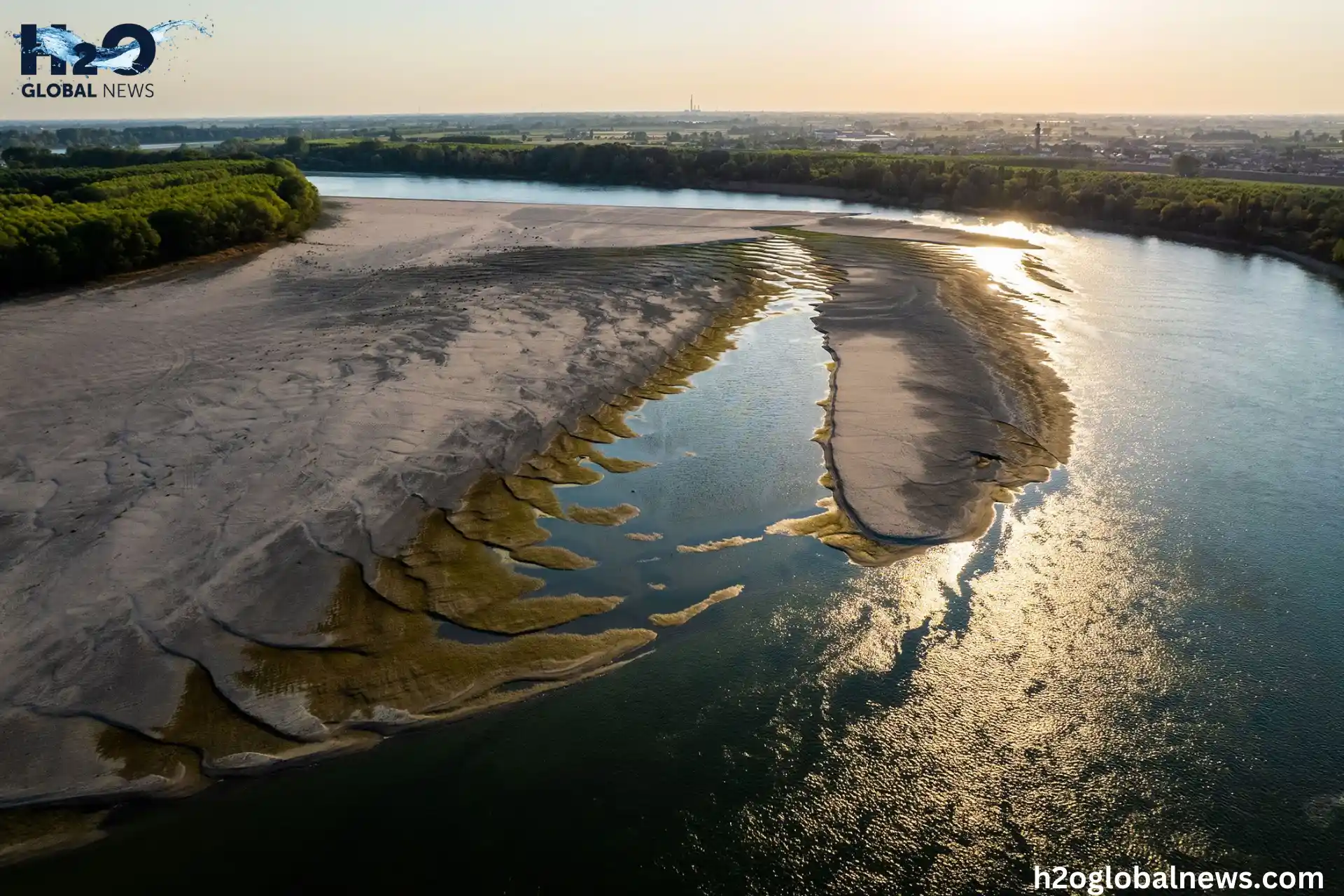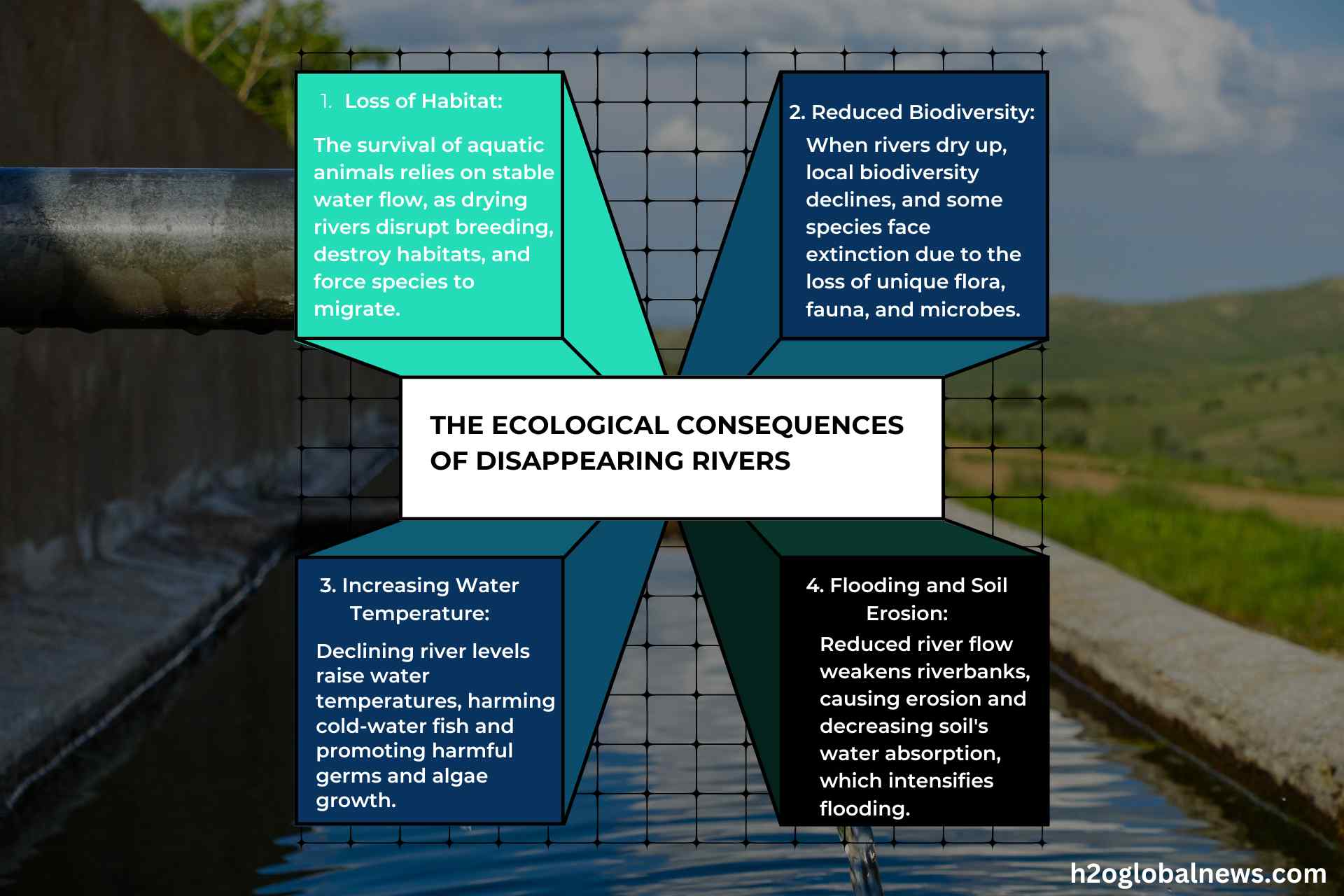The rivers that have sustained civilization for thousands of years are disappearing alarmingly. You have likely heard dire warnings about the effects of climate change on the environment, but the impact on the rivers that provide fresh water and enable trade and transportation is one of the most severe threats. Across the world, drying up rivers is stark evidence of climate change’s accelerating impacts, with many rivers experiencing declining water levels, shrinking flows, or even vanishing entirely.
This article explores how climate change affects rivers, contributing to the Global Water Crisis, and examines the consequences for communities, agriculture, and ecosystems.
Why Are Rivers Drying Up?
Many factors are contributing to the disappearance of rivers around the globe, but human-caused climate change is the primary culprit.
Increased Temperatures
Rising global temperatures cause increased evaporation and alter precipitation patterns, reducing water flow into rivers and streams. Higher temperatures also accelerate glacial melt, which provides water for many rivers. As glaciers disappear, rivers are left with little to no water supply in the long term.
Changes in Weather Patterns
Shifts in weather patterns are modifying rain and snowfall, causing droughts in some areas and heavier downpours in others. Droughts directly reduce water levels in rivers and streams. Heavier rains can also be problematic, as more intense downpours often result in more significant surface runoff and less groundwater infiltration, providing little benefit to rivers.
Overuse of Water Resources
As the human population grows, the overuse of scarce water resources puts unsustainable pressure on rivers and aquifers. Agriculture accounts for 70% of freshwater use worldwide, and as food demand rises, farmers are depleting rivers and groundwater to irrigate crops.
Dams and diversions also strain rivers by redirecting water flow. Hydropower dams hold back water, reducing flow downstream. Diversion projects reroute river water for human use before it can reach its final destination.
To safeguard the precious few rivers we have left, we must make substantial changes to mitigate and adapt to climate change, transition to sustainable water management practices, and protect rivers from overuse. Our lives depend on the flow of rivers, so we must act now to ensure they continue providing for generations to come.
How the Global Water Crisis is Linked to Shrinking Rivers?
The Global Water Crisis worsens as rivers continue to recede. A global issue affecting both industrialized and emerging nations, water scarcity is no longer just a problem in arid areas. Rivers supply water for factories, farms, and large cities. Water becomes scarcer and more costly as it dries up, posing a hazard to human health, economic stability, and food security.
For example, the Yangtze River in China, the Indus River in South Asia, and the Colorado River in the United States and Mexico all see severe reductions. If these trends continue, millions of people will have an uncertain water future, forcing communities to make tough water conservation and allocation decisions.
The Ecological Consequences of Disappearing Rivers
Rivers sustain a variety of habitats, including fish, migrating birds, and plants. The species that depend on rivers suffer significantly as they get smaller:
- Loss of Habitat: The survival of fish and other aquatic animals depends on steady water depth and flow. When a river dries up, breeding cycles are disrupted, habitat is destroyed, and species are forced to move—if they can.
- Reduced Biodiversity: Riverine ecosystems frequently harbor a distinctive variety of flora, fauna, and microbes. However, when rivers dry up, local biodiversity declines and some species go extinct.
- Increasing Water Temperature: Cold-water fish and other species that cannot withstand warmer water suffer from the faster rise in water temperatures when river levels decline. Additionally, this change may promote the growth of dangerous germs and algae.
- Flooding and Soil Erosion: Rivers also play a critical role in soil health. Reduced water flow weakens riverbanks, leading to erosion, and decreases the soil’s ability to absorb water, making floods more severe.
Vanishing Glaciers: Why Snow and Ice Loss Matters for Rivers
As the climate continues to warm, glaciers around the world are rapidly melting and retreating. Glaciers act as massive reservoirs, storing water in ice and snow in winter and releasing it in the summer when rivers and streams run low. As glaciers shrink in size, they are unable to store and release as much water. This has significant impacts on river systems and water resources.
Reduced Water Storage and Supply
Glaciers store roughly 75% of the world’s freshwater, but this storage capacity diminishes as they melt. The water from melted glaciers initially leads to increased river discharge and flooding, but over time, rivers are left with little water input as glaciers disappear. Many rivers fed by glacial meltwater start to run dry for parts of the year, affecting water availability and quality.
Changes in Seasonal Runoff Patterns
Glaciers regulate the flow of rivers by releasing meltwater during the warmer summer months. As glaciers recede, rivers experience changes in seasonal runoff, with peak flows shifting to spring and early summer when snowmelt occurs rather than later in the summer when water is most needed. This can lead to water shortages during critical periods and disrupt aquatic ecosystems.
Impacts on Freshwater Resources
Changes in glacial runoff ultimately threaten freshwater resources for human use like drinking, agriculture, and hydropower. Some rivers may run dry for periods, necessitating water use restrictions. Hydropower production can fluctuate or decline without consistent glacial meltwater. Farmers may face water shortages during critical parts of the growing season. As glaciers vanish, it deprives future generations of this critical freshwater source and all the resources it sustains.
In summary, dwindling glaciers significantly impact rivers and freshwater resources worldwide through loss of water storage, shifts in seasonal runoff, and threats to water supply. We must take urgent action to curb greenhouse gas emissions and slow the rapid decline of glaciers to protect our water lifelines for the future.
Solutions to Protect Our Water Future
Several actions can help preserve ecosystems, conserve water, and lessen the effects of climate change to address the global water crisis and river drying.
- Putting Sustainable Water Management into Practice: Using efficient water management systems in urban and agricultural areas can reduce water waste. Strategies like water recycling, effective irrigation, and rainwater collection can preserve river flows and reduce consumption.
- Reducing Greenhouse Gas Emissions: Reducing greenhouse gas emissions will eventually benefit drivers and slow climate change. To address the root cause of climate change, governments and businesses must invest in ecologically friendly policies and renewable energy.
- Restoring Forests and Wetlands Forests and wetlands are essential to the health of rivers. Restoring these organic buffers will help us lower evaporation, slow down river flow to prevent erosion, and support local wildlife.
- Modern Conservation Techniques: Modern water conservation techniques like precision agriculture and drip irrigation can drastically reduce water waste in agriculture, which is the largest consumer of freshwater worldwide. These techniques help farmers save water in agriculture and support a more sustainable water future for rivers.
International Cooperation
Since rivers cross borders, multinational cooperation is essential. Countries should:
- Negotiate water-sharing agreements that allocate water somewhat between nations, especially in drought. Existing treaties may need revisiting.
- Share data on water availability, usage, and environmental impacts to understand a river’s health from source to mouth.
- Work together on conservation strategies for entire watersheds and address issues like pollution that impact water quality downstream.
By taking action at home and abroad with sustainable policies and practices, we can revive the world’s rivers before they dry up or disappear completely. Our lives and livelihoods depend on the flow of these vital waterways, so solutions must come quickly. The time for excuses has run dry; now is the era for action.
Conclusion
All over the planet, rivers are running dry at an alarming rate. As climate change intensifies droughts and dries up water sources, the effects devastate human society and the environment. The time for action is now. You must use water sustainably, reduce waste, and conserve this precious resource whenever possible. Support organizations working to protect rivers and wetlands in your area. Eat a sustainable diet and reduce your carbon footprint. We must call governments and businesses to transition to renewable energy and more sustainable practices. Our rivers are disappearing, but if we all do our part, we can help turn the tide on this crisis and ensure that rivers will flow for future generations. The choice is clear. Our rivers depend on it. The planet depends on it. Our future depends on it.
FAQs
1- Does climate change cause dry air?
Yes, climate change can contribute to drier air by increasing temperatures, which leads to higher evaporation rates and reduced humidity in some regions. This can result in drier climates, droughts, and more frequent wildfires. However, its impact varies by location, as some areas may experience increased humidity instead.
2- Will global warming make more rain?
Yes, global warming can lead to more rainfall in some areas. Warmer temperatures increase evaporation, which adds more moisture to the atmosphere. This can result in heavier rains, storms, and flooding in certain regions, while others may experience droughts due to shifting weather patterns.
3- What is the largest river in the world drying up?
The Amazon River, the largest river by volume, is experiencing record-low water levels due to droughts, deforestation, and climate change. Other major rivers, like the Mississippi, Yangtze, and Nile, are also facing drying trends due to rising temperatures and reduced rainfall.











